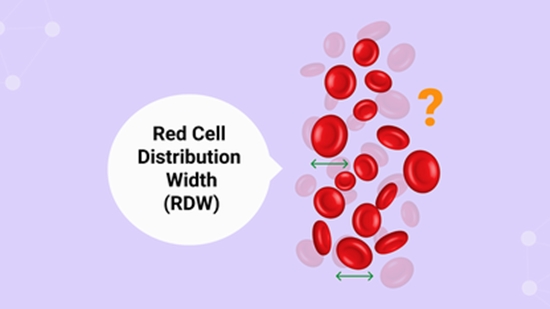Association between red blood cell distribution width and the Prognosis of Brain Death in Patients with a Glasgow Coma Scale <6
Red blood cell distribution width (RDW)biomarker is a simple and inexpensive laboratory test that may be seen as a valuable perspective for initial patient evaluation. RDW is a powerful marker for the prognosis of brain death in patients with a GCS ≤ 6 at admission time, in order to identify a subset of patients who may require more aggressive management in the trauma center

Association between red blood cell distribution width and the Prognosis of Brain Death in Patients with a Glasgow Coma Scale <6
Marzieh Latifi, Habib Rahban , Elahe Pourhosein, Daniel Shostak, Sanaz Dehghani
Abstract
Red blood cell distribution width (RDW) has been reported as a meaningful prognostic factor in various diseases. Our study compared patients' RDW levels and prognosis at admission and discharge time.
A total of 128 patients 77 patients who suffered brain death (subject group), and 51 patients who were discharged from the hospital (control group) with GCS ≤ 6 were recruited from 60 hospitals for this study.
Demographical data and RDW measurements in these patients at admission time and brain death / discharge time were extracted into two groups. 46 (35.9%) patients were females and 82 patients (64.1%) were males with a median age of 36 years old.
A significant difference in baseline characteristics of GCS (P< 0.001), RDW at admission time (P< 0.001), and RDW at discharge or brain death time (P< 0.001) were noted between the two groups.
In the overall population, RDW at admission time had a median value of 13.75% and was positively correlated with gender (P < 0.04, rs = 0.582) and age (P< 0.023, rs = -0.201).
Initially, there were no significant differences in RDW upon admission. However, upon discharge, although the RDW in the control group was not significant (P<0. 1), the RDW level at the time of brain death was notably 0.45 fold higher (P=0.001) compared to the time of admission. The standardized residuals at the two-time points showed an approximately normal distribution. The most effective RDW cut-off in Brain death was determined as 14.55. Based on the findings, using RDW as a prognostic factor has a sensitivity of 0.468 and a specificity of 0.137 in diagnosing brain death.
RDW biomarker is a simple and inexpensive laboratory test that may be seen as a valuable perspective for initial patient evaluation. RDW is a powerful marker for the prognosis of brain death in patients with a GCS ≤ 6 at admission time, in order to identify a subset of patients who may require more aggressive management in the trauma center.
برای دسترسی به متن کامل مقاله میتوانید به سایت زیر مراجعه نمایید:



ارسال نظر